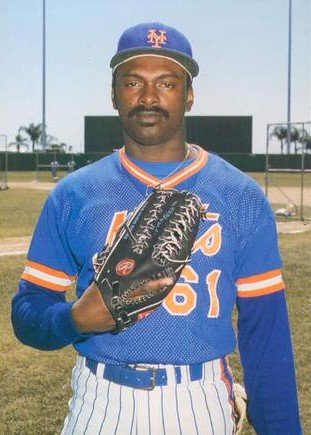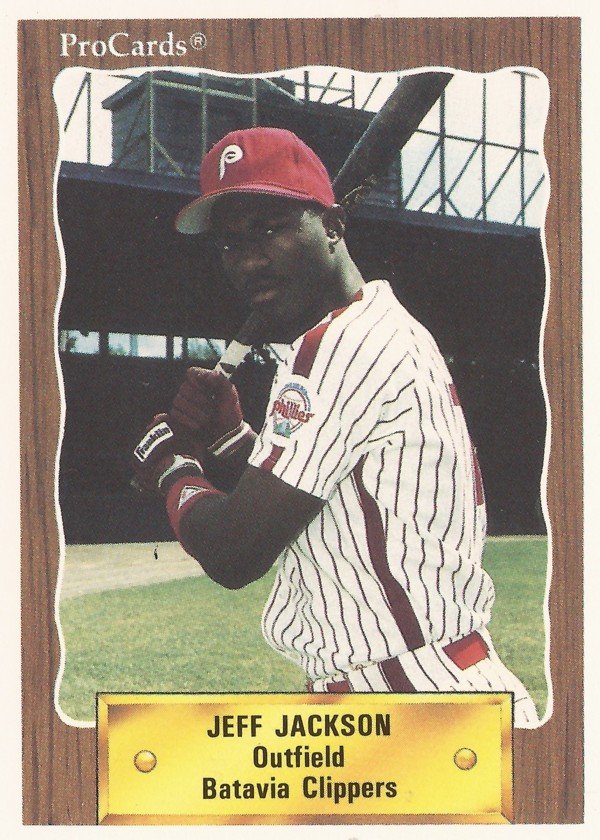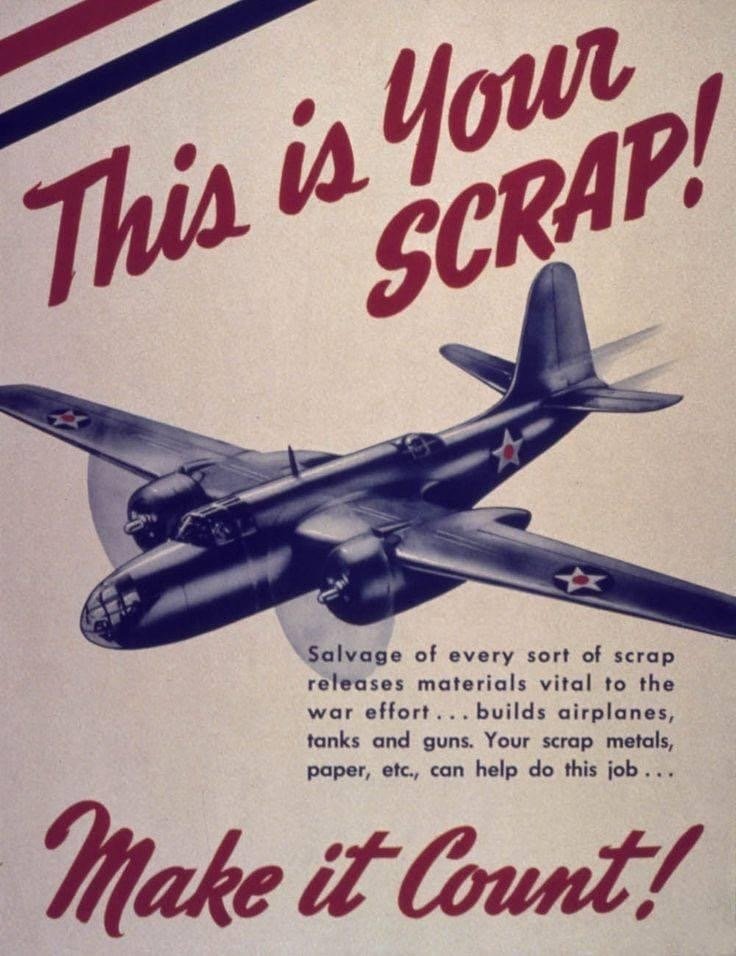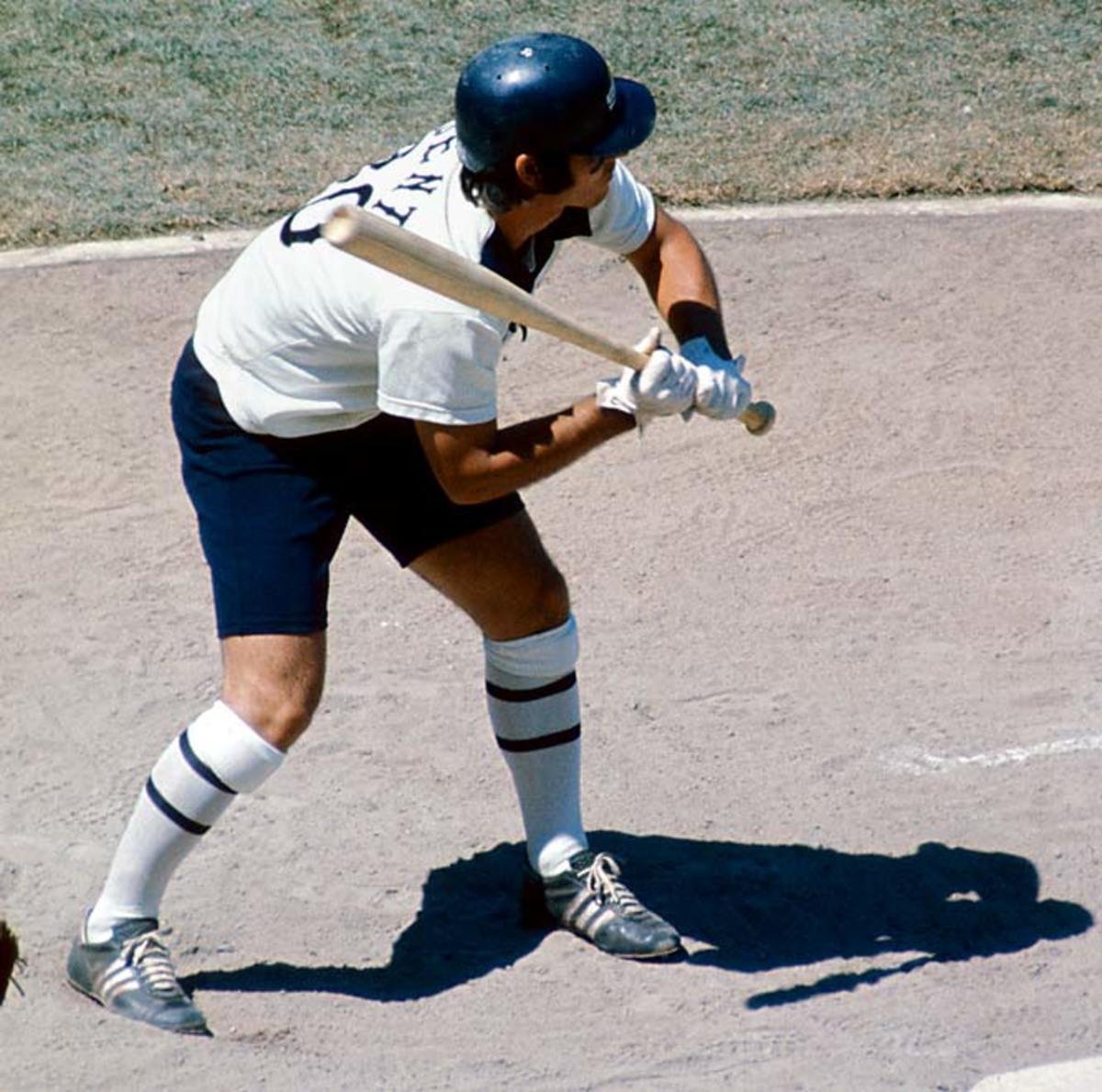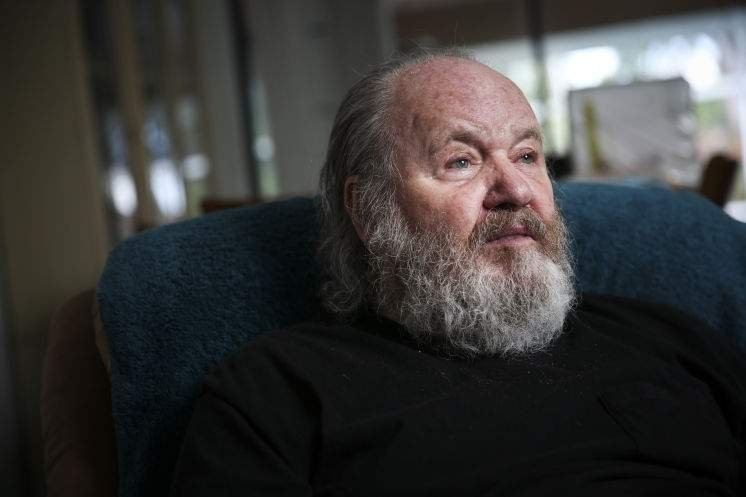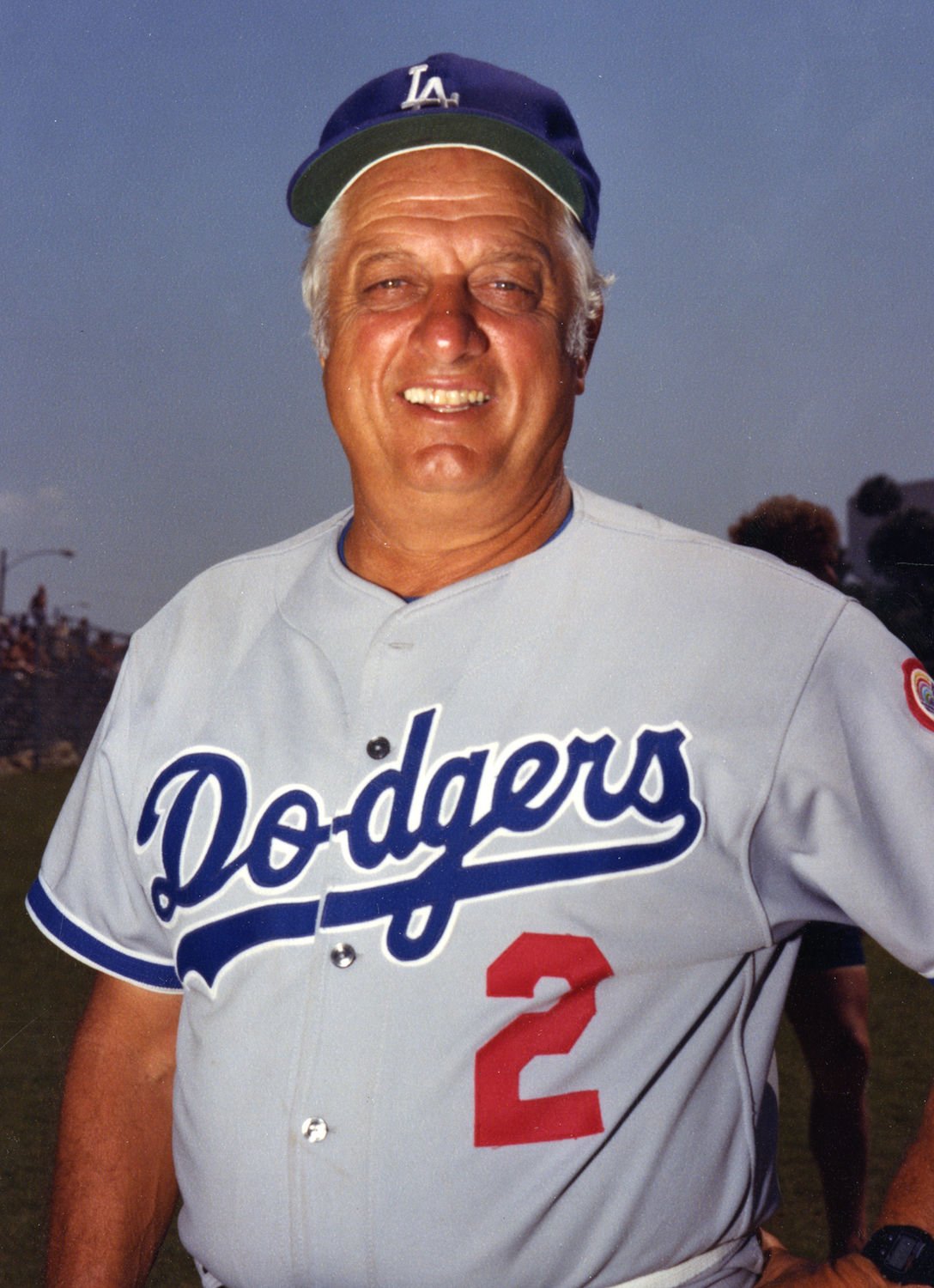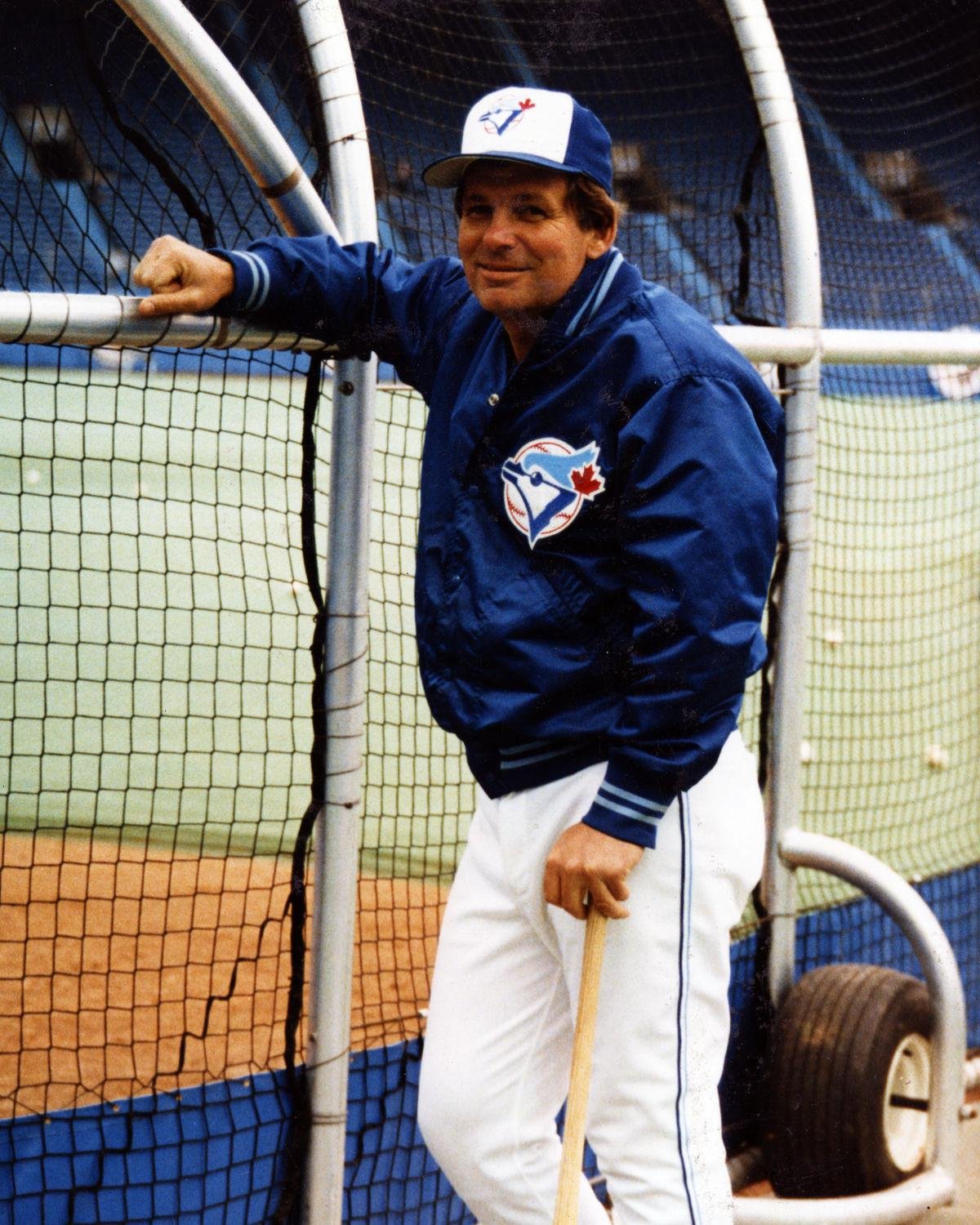Welcome to another edition of Humm Baby Busts and today we enter into the decade of the 1980’s, possibly the best decade ever for draft picks with names like Barry Bonds, Ken Griffey Jr., Frank Thomas and Roger Clemens among many other superstars. However, there were also many major busts, many whom were taken ahead of some of the legends I just mentioned. Many of these high picks taken in the top 10 never even made the big leagues. So, let’s get into it today with the Top 15 MLB Draft Busts of the 1980’s.
Ty Griffin
#15 Ty Griffin – 1988, 9th Overall – Chicago Cubs
The 1988 MLB Draft was full of massive talent and the Chicago Cubs made the tough decision to pass on Robin Ventura, who was taken 1 spot later by the White Sox. The Cubs instead went with a switch-hitting second baseman out of Georgia Tech named Ty Griffin, with plans to move him to third base due to already having Ryne Sandberg at 2nd. Griffin, a 5-tool talent, had stolen 50 bases in a season, just being caught 4 times and had big power potential as well. He hit .322 for his college career with 22 homers and 127 total steals. After the move third base, he struggled, making 23 errors in 1989 with Double-A Charlotte and also hit poorly with a .231 average, and just 3 home runs. In 1990 his average dropped to just .209 and he had injury problems with bursitis in his throwing shoulder. Griffin was never able to really produce at a high level in the minors, although his speed still resulted in 94 career minor league steals. From 1993 to 1997 he played in the Independent Leagues aside from one year, 1995, in which he played in Double-A with the Cardinals organization, hitting .274 with 11 homers and 12 steals. Griffin never made it the big leagues, but has no regrets about his playing career and went on to be the head coach at Tampa Catholic High School for 10 years.
Drew Hall
#14 Drew Hall – 1984, 3rd Overall – Chicago Cubs
After losing 91 games in 1983, the Cubs had a chance to enhance their farm system with the 3rd overall pick in the 1984 MLB Draft. They passed over names like Jay Bell, Mark McGwire and Tom Glavine to select a left-handed pitcher named Drew Hall out of Moorhead State. He had just gone 9-1 with a 2.18 ERA and 103 strikeouts in 70 innings and was a member of the U.S. Olympic team. Unfortunately, his numbers fell drastically in the minor leagues, although he was serviceable. Hall went 10-7 in 1985 with a 4.67 ERA. He struck out 8.6 batters per nine but also walked 5.3 The following year in Double-A, he went 8-11 with a 3.58 ERA, good enough to be promoted to the big leagues. He started 4 games for the Cubs and went 1-2, giving up 12 runs and 10 walks in 23 innings. Hall was sent to the bullpen for the following year and struggled in the role until the Cubs traded him to the Rangers in a famous trade that sent Mitch Williams to Chicago. He was a serviceable relief pitcher for the Rangers in 1989 then the Expos in 1990 before spending the next four seasons in Triple-A before retiring. Hall had a career 5.21 ERA with a -1.2 WAR, but because he made the big leagues and had some moderate success as a reliever, he doesn’t come in too high on the list.
Terry Blocker
#13 Terry Blocker – 1981, 4th Overall – New York Mets
In 1981 with their 4th overall pick, the Mets went with a talented college outfielder named Terry Blocker. He had just completed a phenomenal year at Tennessee State, hitting .402 with 11 home runs, 11 triples and 34 steals in 35 attempts. In 119 college attempts, he was caught stealing just 3 times. He entered Low A in 1981 and was instantly electric, hitting .341 with 14 steals and 7 home runs in 36 games. The next year in Double-A, Blocker regressed some, hitting just .260 with 5 homers in 438 at bats, but he did steal 40 bases. His batting average improved over the next couple seasons, although his power never developed. Blocker was promoted to the big leagues in 1985 but went 1 for 15. The Mets never promoted him again despite a couple more solid seasons in Triple-A. He was traded to the Braves for Kevin Brown and got an extended shot in the bigs with 210 plate appearances, but hit just .212 with a .533 OPS and 1 single stolen base. 1989 was Blocker’s final pro season, and he hit .226 for Atlanta, but spent most of the year in the minors. Even his speed was gone at this point, as he stole just 4 bases all season long, but was caught 5 times.
In 1995, Blocker attended Spring Training as a replacement player with the Braves and made headlines after helping police track down the murderer of his teammate, David Shotkoski, who was shot by a man named Neal Evans during a robbery attempt in West Palm Beach. Blocker scoured through the worst parts of town, gathering information and ultimately discovering the name of the killer. Police made the arrest and offered reward money to Blocker, but he refused it, telling them to give the money to Shotkoski’s wife.
Mike King
#12 Mike King – 1980, 4th Overall – Oakland Athletics
In 1980 with their 4th overall pick, the Oakland A’s tried to save some bonus money and drafted a talented pitcher out of a Division II school called Morningside University in Sioux City, Iowa. His name was Mike King. King dominated batters in his conference, winning the division’s Most Valuable Pitcher award, but he had never faced top level competition. He certainly deserved to be drafted after striking out 93 batters in 56 innings with a .47 ERA, but taking him 4th overall was a huge risk.
The A’s paid King only $35,000, the lowest bonus in the Top 25. Then, they made the baffling decision to throw him straight in Triple-A, where he would face seasoned hitters, many with big league experience. He went 0-4 with a 7.71 ERA, walking 31 batters in just 20 innings. The next year he was traded to the Cubs, who sent him to Single-A, where he should’ve been in the first place. With his confidence likely already busted, King went 1-3 with a 5.53 ERA in 11 starts, walking 41 batters in 49 innings. He was promoted to Double-A but was even worse with a 7.76 ERA. He ended up in the Yankees organization but never could completely solve his control issues. He was also not blowing too many hitters away, striking out just 5.4 batters per 9 throughout his minor league career. Ultimately, although King was a bust, I can’t put him too high on this list because he should’ve never been taken 4th overall and certainly should not have started his minor league career in Triple-A.
Donald Harris
#11 Donald Harris – 1989, 5th Overall – Texas Rangers
With the 5th pick of the 1989 Draft, the Texas Rangers went with a raw but toolesy Texas Tech outfielder, Donald Harris, ahead of potential picks like Frank Thomas and Mo Vaughn. Harris was a multi-sport athlete who was also an All-Southwest Conference Safety for the Texas Tech. As a baseball player, he hit .322 with 10 homers, and a .938 OPS. He also had tremendous speed, although likely due to a coaching decision, he didn’t steal a lot of bases. He also missed a lot of baseball due to his football obligations. After a solid stint in rookie ball in 1989, Harris was sent to Single-A in 1990, but struggled, hitting just .184. In Double-A in 1992, he hit just .227 with a low .278 on-base percentage and 11 home runs. He stole 9 bases but was caught 8 times. Despite these stats, the Rangers promoted Harris and he had successful call-up, going 3 for 8 with a home run. But this small sample size was deceiving and in 1992, he hit .182 with 15 strikeouts in 33 at bats. They gave him one last look in 1993, but Harris hit .197 and retired after two more seasons in the minors. After retiring from baseball, he continues to stay around baseball, attending various camps and youth leagues, where he serves as a mentor and motivational speaker.
Stan Hilton
#10 Stan Hilton – 1983, 5th Overall – Oakland Athletics
1983 was a somewhat slow draft, but it did produce one of the greatest pitchers in MLB history, Roger Clemens at #19. The A’s passed on Clemens and took a different right handed arm at #5 with Baylor University pitcher Stan Hilton. Hilton was among college baseball’s leaders in ERA and strikeouts, but his talent did not translate too well to the pros. In 1984 in High A with Modesto, he went 3-4 with a 4.95 ERA, only striking out 36 batters in over 56 innings. He was eventually promoted to Double-A in 1986, but in 19 starts, he had a 6.52 ERA, giving up 136 hits in 89 innings. He was traded to the Cleveland Indians and made it to Triple-A but did not show much improvement there and retired from baseball after the 1989 season, never having made it to the big leagues. He went on to become a professional pitching coach, coaching in the minor leagues as well as the independent leagues.
Willie Ansley
#9 Willie Ansley – 1988, 7th Overall – Houston Astros
From around 1985 to 1988, one of the most exciting and electric High School athletes in the country was named Willie Ansley and he dominated multiple sports at Plainview High School in Texas. His speed and agility were top notch and he had his choice of paths to take as graduation neared. His favorite sport was basketball, but he felt his best was football. He had a scholarship offer to play football for the Oklahoma Sooners and had committed to do so after meeting with head coach Barry Switzer. Then, the Houston Astros selected him 7th overall to play professional baseball after he hit .479 with 8 homers and 40 RBIs. For a $180,000 bonus, Ansley signed with the Astros and entered the minor league system as an outfielder. After a slow start in Single-A, Ansley got hot and after 103 games had a .309 average and .846 OPS and 53 steals. He was promoted to Double-A, but his numbers dropped there. His average dropped to .255 in 1990 then .232 in ‘91. He was not showing much power. He was finally promoted to Triple-A in 1993 and had a decent season, hitting .262 with 5 home runs and .390 on-base-percentage. It wasn’t enough to get him a big league promotion. During the minor league playoffs, he tore a ligament in his thumb and the Astros released him after the season. Ansley played some in the Mexican and Independent leagues before retiring and entering into coaching at Lamar High School, where he coached a young Anthony Rendon.
Monty Fariss
#8 Monty Fariss – 1988, 6th Overall – Texas Rangers
From 1986 to 1988, one of the brightest and hottest college hitters in the country played at Oklahoma State and his name was Monty Fariss. In 1988, the year he was drafted, Fariss was absolutely unstoppable, hitting .397 with 30 home runs and 114 RBIs in just 69 games. In 242 at bats, he struck out just 38 times. Fariss set a school record with a hit in 25 consecutive games and he had an incredible 1.368 OPS. Fariss looked like an absolute lock to be a future MLB superstar. The hype was real as he entered rookie ball and hit .396 with 4 home runs. The Rangers bumped him all the way up do Double-A, but that’s where Fariss ran into problems. In 49 games with the Tulsa Drillers, he hit just .224 with 3 homers in 17 games. In his first full season in Double-A in ‘89, Fariss had a decent .272 average but hit a mere 5 home runs in 497 at bats. In 1991, after a couple solid seasons in Triple-A, the Rangers promoted Fariss, but their expectations had fallen drastically after he showed very little power in the minors. He hit .258 with a home run in 38 at bats. The following season, after hitting just .217, the Rangers let Fariss go. He caught on with the Florida Marlins and hit .173 for them in their inaugural season. After two more seasons in the minors, Fariss was out of baseball with a career .217 average and -.2 WAR. Fariss moved back to Oklahoma and started a batting cage business. He was elected to the Oklahoma State Cowboys Baseball Hall of Fame.
Kurt Brown
#7 Kurt Brown – 1985, 5th Overall – Chicago White Sox
1985 was one of the strongest and most famous drafts of all time, producing talents like Will Clark, Barry Larkin, B.J. Surhoff, Bobby Witt, Rafael Palmeiro, Randy Johnson and Barry Bonds. One pick before the Pittsburgh Pirates selected Bonds out of Arizona State, the White Sox had a chance to do the same. Instead, they went with an 18-year old High School catcher named Kurt Brown, leading White Sox fans to play the “what if” game for years to come. Brown, who turned down a football scholarship to play at Long Beach State, was a pure hitter with a fantastic arm, but struggled out of the gate in the minors, hitting .205 with just 3 homers in rookie ball. He improved the next year, but not by much, hitting .234 in A-Ball. His progress was extremely slow as he played just well enough to hang around, but never showed big league talent. He didn’t play a full season in Double-A until 1990, when he hit .269 with 4 home runs. That same year, Barry Bonds won the MVP award and a Gold Glove with Pittsburgh. Brown played one last season in Triple-A in 1986 before retiring from baseball. He returned to school to earn his degree and entered into the finance world. He became the Vice President of First Montana Bank in 2020.
Jeff Jackson
#6 Jeff Jackson – 1989, 4th Overall – Philadelphia Phillies
In 1989, the Philadelphia Phillies had the rare opportunity to have the 4th overall pick in the MLB draft and there was a ton of talent to choose from including the powerful Frank Thomas out of Auburn, Chuck Knoblauch from Texas A&M and Seton Hall’s Mo Vaughn. The Phillies instead went with a High School kid who had just hit over .500 his Senior Year and had tremendous potential, Jeff Jackson. He had won the Gatorade Player of the Year award and was considered a premiere 5-tool talent. However, he was just 17 years and old and had immediate trouble against the professional pitching he faced in the minors. After a rough stint in Rookie Ball, he played his first full season in Low A in 1990 and hit just .198 with 3 home runs. He stole 12 bases but was caught 11 times. A lower draft pick would’ve already been released, but Jackson was promoted to A Ball in 1991 and continued to struggle, hitting .225 with just 5 homers. He reportedly felt some culture shock and isolation during his first couple years in the minors and was pressured heavily by the press, with one journalist calling him “Clueless Jeff Jackson.” The Phillies hung onto Jackson all the way through the 1994 season in which he hit just .177 in Double-A. Realizing he was not going to meet expectations, he was finally released and caught on with the White Sox organization for a season before entering into the independent leagues. He hit much better there and was given one more shot in affiliated ball with the Pirates in 1998. He hit .278 with a couple homers with their High A team, but that would be his final season of professional baseball. Jackson has since started a Sports & Entertainment Agency and written a book called “The Gift & The Curse: The Jeff Jackson Story.”
Bill Bene
#5 Bill Bene – 1988, 5th Overall – Los Angeles Dodgers
Back in the 1980’s, baseball cards of draft picks usually weren’t a thing. However, this Bill Bene card was fairly hot for a short while. Bene was taken 5th overall in the 1988 Draft by the Dodgers, the same team that also drafted Mike Piazza that year – with 1,390th pick. They also took Erik Karros with 140th. Luckily, those two worked out. The same cannot be said for Bill Bene, who had a lively arm that the Dodgers loved. Scouts saw his stuff and thought that he could be an elite arm, but needed some professional coaching to improve his control, which was absolutely terrible in college. It was a huge gamble to take him so high – and the Dodgers lost the bet. Bene went 5-0 in his professional season, but he must’ve gotten some solid run support, because he walked 45 batters in 65 innings and gave up 33 runs for an ERA of 4.55. The next year, in A-ball, the numbers started to become ridiculous and video-gamish in a bad way. In 27 innings, he struck out a decent 24 batters.. but walked 56. His ERA ballooned up to 12.64. In 1990 at Vero Beach, things really got out of hand as he walked 96 batters in 56 innings. The run support finally ended for Bene too, as he went 1-10 with an ERA of 6.99. If Bene wasn’t the 5th overall pick, he would’ve been released a long time ago at this point. Instead, he came back year after year, sometimes showing slight improvements in his control but never being able to consistently command the zone whatsoever. In 1994, still in the Dodgers organization, he walked 49 batters in 50 innings with a 6.04 ERA, strictly coming out of the bullpen at this point. Mercifully, the Dodgers released him. The Reds took a chance on him the next year with their Double-A team, but he walked 9 batters in 4 innings to end the experiment. He missed the ‘96 season and made a comeback attempt with the Angels in 1997, but the control just wasn’t there. Even at this point, he struck out 70 batters in 68 innings, but walked 66, going 0-4 with a 6.68 ERA. He was finally out of baseball, but continued to get busted even later in life, as he was arrested and sentenced to 6 months in jail in 2012 for operating a counterfeit karaoke business without paying taxes. Once a bust, always a bust.
Mark Merchant
#4 Mark Merchant – 1987, 2nd Overall – Pittsburgh Pirates
In 1987, the Pirates had the 2nd overall pick just after the Mariners, who used their 1st overall pick to take future Hall-of-Famer Ken Griffey Jr. With the 2nd pick, the Pirates went with another High School outfielder by the name of Mark Merchant. He was a speedy 5-tool talent who stole 48 bases in 49 attempts his Senior Year and hit .419 with 5 home runs. The Pirates hoped he would develop even more power in the minor leagues. In his first year in rookie, Merchant hit .265 with 3 homers and 33 steals in 50 games, a decent start. Then, halfway through the next season, he separated his shoulder diving for a ball, ending his season. He was only hitting .242 at the time with a couple home runs and the Pirates traded him to the Mariners, who now had both Griffey Jr. and Merchant, the top 2 picks of the ‘87 draft. However, Merchant didn’t do much better in the Mariners organization, putting up below average numbers for several years in the minors, while also battling multiple injuries. After hitting .244 with a .685 OPS in Double-A in 1992, the M’s released him. Merchant considered retirement but instead signed with the Reds and showed some signs of why he was originally drafted second overall. He hit .301 with 17 home runs in Double-A in 1993, earning a promotion to Triple-A. But he never made it to the big leagues. Merchant ended up in the Independent leagues and spent some time in the White Sox and Royals organizations, playing all the way through the 1998 season. “To be able to still have good success in Double-A, when I couldn’t run or throw like I used to, says a lot,” Merchant said. “I gave it everything I had. I played those last seven years with one arm and one leg.” After retirement, Merchant earned his real estate license and started his own business near Denver, Colorado.
Augie Schmidt
#3 Augie Schmidt – 1982, 2nd Overall – Toronto Blue Jays
During the late 70’s, a High School player named Augie Schmidt was already making headlines and was drafted by the Orioles in the 9th round of the ‘79 draft. Instead of signing with the O’s, Schmidt went to play college ball at the University of New Orleans and his draft stock only skyrocketed from there after he hit .352 with an OPS over 1.000 while playing elite defense at shortstop. In 1981 in over 200 at bats, he struck out just 16 times while walking 52. He had an advanced knowledge of the strike zone and was one of the finest pure hitters in the draft. In 1982, the Blue Jays took him 2nd overall. He hit well through the low levels of the minors, but once Schmidt hit Triple-A in 1984, on the verge of the big leagues, he hit a snag. In 46 games with Syracuse, he hit just .201 with a .280 on-base-percentage, but he did battle some injuries including a fractured wrist. He still put the ball in play, but without much authority. He didn’t hit a single home run despite crushing 14 his final season in college. “The aluminum bat helped me an awful lot,” he admitted.
The Blue Jays decided to move on from Schmidt and traded him to the Giants. With the Giants Double-A and Triple-A teams, he improved his average to .273 but still hit zero home runs. The Giants released him and he caught on with Twins for his final pro season in 1986 when Schmidt hit just .226 in A-Ball. After his career, he entered coaching and went on to become the head coach at Carthage College, where he has led the team to multiple division titles and championship runs.
Garry Harris
#2 Garry Harris – 1980, 2nd Overall – Toronto Blue Jays
The 1980 Draft had some phenomenal 5-tool talents available including Billy Beane, Darryl Strawberry, Kelly Gruber, and the player the Blue Jays took second overall, Garry Harris. While Billy Beane can also be considered a bust, at least he made it to the big leagues and wasn’t picked until #23. Harris was taken 2nd and had just hit .426 his Senior Year in High School with 16 steals in 16 attempts. Unfortunately, he was very raw and unproven against top level talent. The Blue Jays quickly found out he would likely not be their future shortstop as they had hoped. He made 54 errors in rookie ball, worse than any other player in the minor leagues. He hit .272 but with very little power to speak of. The next season in A ball, over a full season, Harris hit .253 with 15 homers, still struggling defensively. His average dropped again the next year to .235 then .224 in Double-A in 1983. Harris played poor defense, struck out too much, did not show much power and could not hit for a high average. His on-base-percentage was just .266. The Blue Jays released him after 1983 but in a creative move, they picked up Kelly Gruber from Cleveland in the Rule 5 Draft, which gave them another shortstop from the 1980 draft. Gruber worked out with the Jays and ended up becoming a staple in the Toronto lineup all the way through 1992, the year they won their first World Series. So, while Harris was a bust, the 1980 first round turned out okay for Toronto. As for Garry Harris, he went on to work for the city of San Diego for 25 years before retiring and becoming a do-it-yourself car mechanic. He spent most of his time with his family until passing away in 2022.
Shawn Abner
#1 Shawn Abner – 1984, 1st Overall – New York Mets
Coming in as my #1 Draft Bust of the 80’s is Shawn Abner. It was the 1984 Draft and the Mets were looking to build the best outfield in baseball. They already had Darryl Strawberry and Billy Beane was getting ready to get promoted. They identified Shawn Abner as an “all-around, can’t miss prospect.” So, the Mets took him as the #1 overall pick, ahead of USC star Mark McGwire. He hit for decent average in the minors but his power was lacking. In 1986 with the Double-A Jackson Mets, he hit .266 with 14 homers and a .739 OPS. The Mets decided to include him in a blockbuster 8-man deal that sent Kevin Mitchell to the Padres for Kevin McReynolds. With the Las Vegas Stars Triple-A team in ‘87, he hit .300 with 11 home runs and the Pads decided to give him a shot in the big leagues. Unfortunately, he was not very good at all, hitting .181 in 1988 and .187 in 1989. He didn’t even offer any power to offset the low batting averages. He was let go by the Padres and spent some time with the Angels and White Sox before spending the entire 1994 season in the minors with the Royals organization. He then crossed the picket line and joined the replacement players in 1995 Spring Training. He never played in the big leagues again. In 2020, he was sentenced to 4.5 to 23 months in prison for animal cruelty after leaving his dog at home for over a month, resulting in the dog passing away. Apparently, he didn’t ask any one to care for the dog while he was gone. Just for that terrible act and due to the fact that he was a #1 overall pick who had a -1.3 career WAR, I’m going to put Abner as my #1 bust of the 1980’s.
And that does it for today’s video on the biggest draft busts of the 1980’s; I hope you enjoyed it; I appreciate all the support! Look forward to more draft busts videos in the future as well as other interesting documentaries and countdowns as well. Have a wonderful day; hit that thumbs up and subscribe button; leave a comment down below and we’ll talk to you in the next one.




